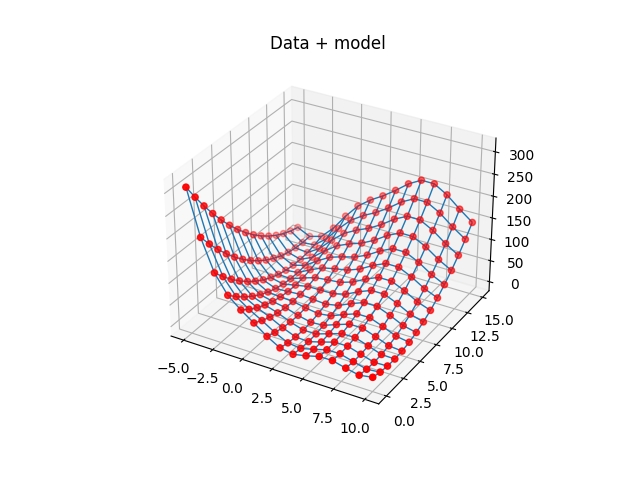Compute Flow
This page shows how you run a compute flow.
In this page, we provide the steps for publishing algorithm asset, run it on Ocean environment for C2D and retrieve the result logs, using ocean.py.
We assumed that you have completed the installation part with the preferred setup.
Here are the steps:
Alice publishes dataset
Alice publishes algorithm
Alice allows the algorithm for C2D for that data asset
Bob acquires datatokens for data and algorithm
Bob starts a compute job using a free C2D environment (no provider fees)
Bob monitors logs / algorithm output
Let's go through each step.
1. Alice publishes dataset
In the same python console:
# Publish data NFT, datatoken, and asset for dataset based on url
# ocean.py offers multiple file object types. A simple url file is enough for here
from ocean_lib.structures.file_objects import UrlFile
DATA_url_file = UrlFile(
url="https://raw.githubusercontent.com/oceanprotocol/c2d-examples/main/branin_and_gpr/branin.arff"
)
name = "Branin dataset"
(DATA_data_nft, DATA_datatoken, DATA_ddo) = ocean.assets.create_url_asset(name, DATA_url_file.url, {"from": alice}, with_compute=True, wait_for_aqua=True)
print(f"DATA_data_nft address = '{DATA_data_nft.address}'")
print(f"DATA_datatoken address = '{DATA_datatoken.address}'")
print(f"DATA_ddo did = '{DATA_ddo.did}'")To customise the privacy and accessibility of your compute service, add the compute_values argument to create_url_asset to set values according to the DDO specs. The function assumes the documented defaults.
2. Alice publishes an algorithm
In the same Python console:
3. Alice allows the algorithm for C2D for that data asset
In the same Python console:
4. Bob acquires datatokens for data and algorithm
In the same Python console:
You can choose each method for getting access from consume flow approaches.
5. Bob starts a compute job using a free C2D environment
Only inputs needed: DATA_did, ALGO_did. Everything else can get computed as needed. For demo purposes, we will use the free C2D environment, which requires no provider fees.
In the same Python console:
6. Bob monitors logs / algorithm output
In the same Python console, you can check the job status as many times as needed:
This will output the status of the current job. Here is a list of possible results: Operator Service Status description.
Once the returned status dictionary contains the dateFinished key, Bob can retrieve the job results using ocean.compute.result or, more specifically, just the output if the job was successful. For the purpose of this tutorial, let's choose the second option.
You can use the result however you like. For the purpose of this example, let's plot it.
Make sure you have matplotlib package installed in your virtual environment.
You should see something like this:

Appendix. Tips & tricks
This README has a simple ML algorithm. However, Ocean C2D is not limited to usage in ML. The file c2d-flow-more-examples.md has examples from vision and other fields.
In the "publish algorithm" step, to replace the sample algorithm with another one:
Use one of the standard Ocean algo_dockers images or publish a custom docker image.
Use the image name and tag in the
containerpart of the algorithm metadata.The image must have basic support for installing dependencies. E.g. "pip" for the case of Python. You can use other languages, of course.
More info is available on the algorithms page
The function to pay_for_compute_service automates order starting, order reusing and performs all the necessary Provider and on-chain requests. It modifies the contents of the given ComputeInput as follows:
If the dataset/algorithm contains a
transfer_tx_idproperty, it will try to reuse that previous transfer id. If provider fees have expired but the order is still valid, then the order is reused on-chain.If the dataset/algorithm does not contain a
transfer_tx_idor the order has expired (based on the Provider's response), then one new order will be created.
This means you can reuse the same ComputeInput and you don't need to regenerate it everytime it is sent to pay_for_compute_service. This step makes sure you are not paying unnecessary or duplicated fees.
If you wish to upgrade the compute resources, you can use any (paid) C2D environment. Inspect the results of ocean.ocean_compute.get_c2d_environments(service.service_endpoint, DATA_ddo.chain_id) and ocean.retrieve_provider_fees_for_compute(datasets, algorithm_data, consumer_address, compute_environment, duration) for a preview of what you will pay. Don't forget to handle any minting, allowance or approvals on the desired token to ensure transactions pass.
Last updated
Was this helpful?

